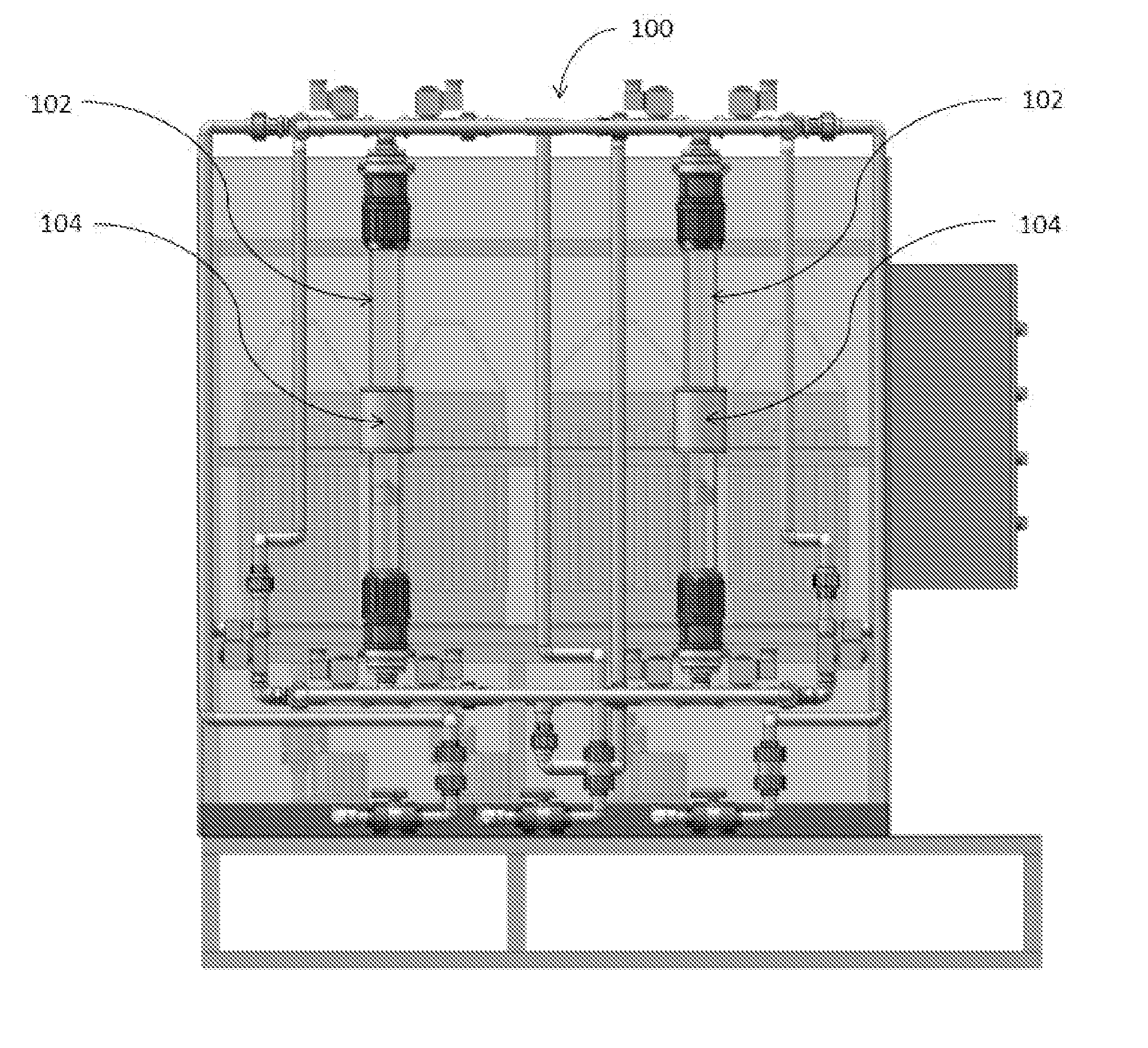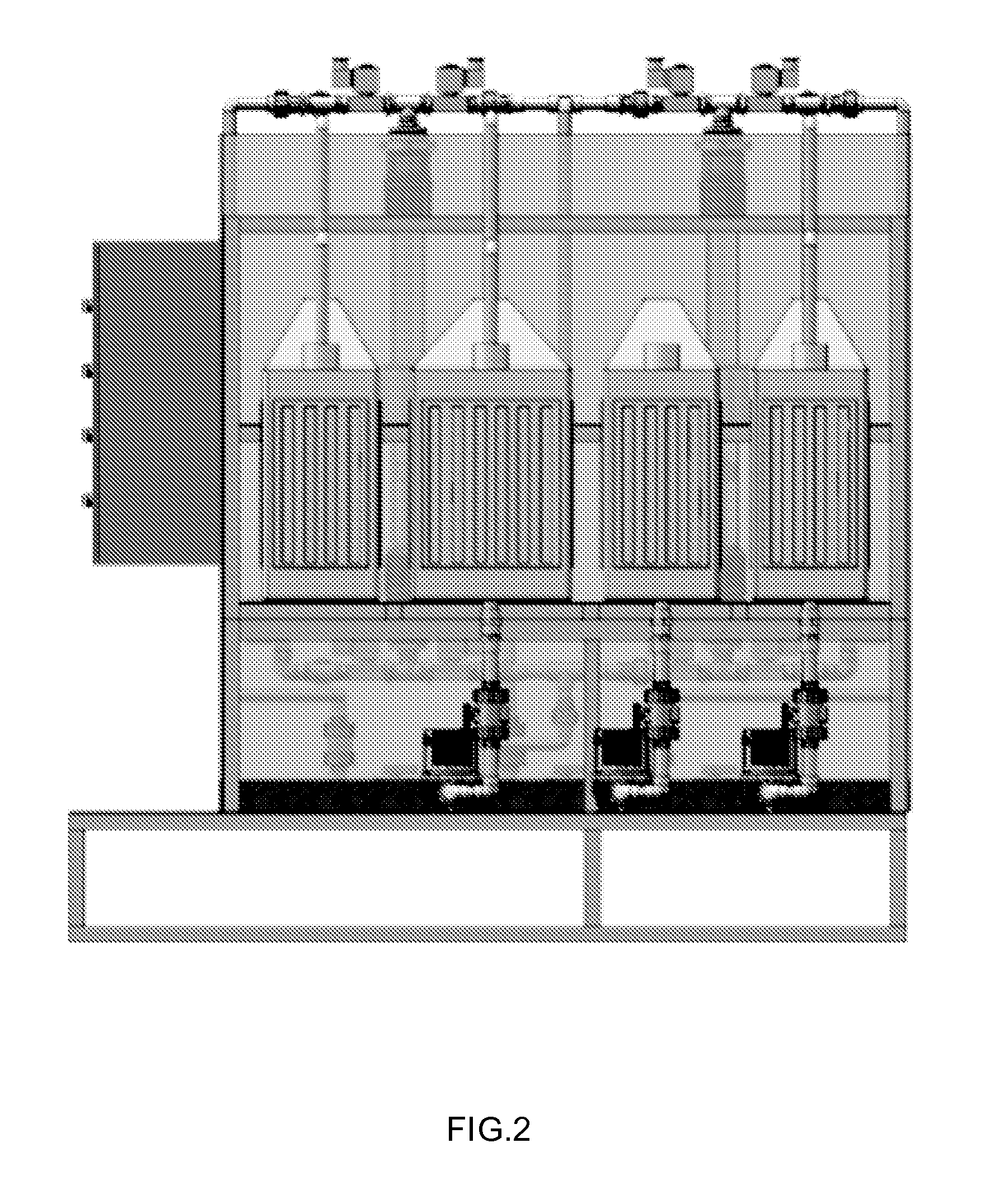Magnetic nanostructures and device implementing same
a nano-particle and magnetic technology, applied in the field of magnetic nanoparticles, can solve the problems of increasing the risk to the environment and human health, the challenge of heavy metal removal from water, and the increase of heavy metal ions
- Summary
- Abstract
- Description
- Claims
- Application Information
AI Technical Summary
Benefits of technology
Problems solved by technology
Method used
Image
Examples
example 1
Removal of Hexavalent Chromium from Aqueous Solutions Using Maghemite Nanoparticles
[0083]This example presents the adsorption results using maghemite nanoparticles as adsorbent for removal of the hexavalent chromium from aqueous synthetic solutions.
[0084]Preparation and Characterization of Maghemite (γ-Fe2O3) Nanoparticles:
[0085]There are various methods to prepare γ-Fe2O3 including sol gel and co-precipitation methods. In this example, nanoparticles were prepared according to a modified co-precipitation method. The 0.5M of ferrous chloride (FeCh) solution and 0.25M ferric chloride (FeCl3) were mixed with 5 M NaOH solution, until a pH 12 was reached. Then 0.1M D-sorbitol was used to prevent the agglomeration between the nanoparticles. All reagents used were analytical grade and used without further purification. The formation of Fe3O4 takes place according to the reaction:
FeCl2+2FeCl3+8NaOH→Fe3O4+4H2O+8NaCl (1)
[0086]The iron solutions were strongly stirred in water, after adding N...
example 2
Zn, Ni and Cu Removal from Aqueous Solutions Using Functionalized Magnetic γ-Fe2O3 Nanoparticles
[0103]This example discusses two types of sorbents based on nano-magnetic particles of iron oxide (γ-Fe2O3) as precursors for metals removal (ex., Zn, Ni, Cu).
[0104]Synthesis of Magnetic Nanoparticles
[0105]In this example, magnetic iron oxide (γ-Fe2O3) nanoparticles were synthesized via co-precipitation. Salts of ferrous chloride (FeCh) and ferric chloride (FeCl3) in a ratio of 1:2 in the presence of sodium hydroxide solution were used. D-sorbitol was used to prevent the agglomeration between the nanoparticles. The precipitate was then separated by magnetic decantation and washed several times with distilled water and ethanol. In the first step, magnetite nanoparticles (Fe2O3) were obtained. To obtain maghemite (γ-Fe2O3) nanoparticles, the magnetite nanoparticles were heated up to 200° C. for 3 h.
[0106]Functionalization of Magnetic Nanoparticles
[0107]Magnetic nano-iron oxides can be conju...
example 3
Leaching Tests for Synthesized Magnetite Nanoparticles Used as Adsorbent for Metal Ions from Liquid Solutions
[0116]Synthesis of Magnetite (Fe2O3) Nanoparticles
[0117]In this example, magnetic iron oxide (magnetite) nanoparticles were synthesized by co-precipitation. Synthesis included mixing a volume of 5 mL solution of Fe (II) and Fe (III) chloride (molar ratio 1:2) in ultrapure water and then pouring the solution slowly (dropwise) into a three-neck flask reaction vessel containing 40 mL of 0.9M NH4OH solution. The solution was vigorously stirred for 30 minutes and then the precipitated magnetite was separated from the supernatant by decantation. The solid was washed 4 times with ultrapure water and separated by decantation. Finally, the suspension was centrifuged at 4000 rpm and the solid was dried in a desiccator.
[0118]Conjugation of Nanoparticles
[0119]To prevent the aggregation of magnetite nanoparticles, surfactants such as fatty acids can be added to the solution containing nan...
PUM
| Property | Measurement | Unit |
|---|---|---|
| particle size | aaaaa | aaaaa |
| particle size | aaaaa | aaaaa |
| particle size | aaaaa | aaaaa |
Abstract
Description
Claims
Application Information
 Login to View More
Login to View More - R&D
- Intellectual Property
- Life Sciences
- Materials
- Tech Scout
- Unparalleled Data Quality
- Higher Quality Content
- 60% Fewer Hallucinations
Browse by: Latest US Patents, China's latest patents, Technical Efficacy Thesaurus, Application Domain, Technology Topic, Popular Technical Reports.
© 2025 PatSnap. All rights reserved.Legal|Privacy policy|Modern Slavery Act Transparency Statement|Sitemap|About US| Contact US: help@patsnap.com



